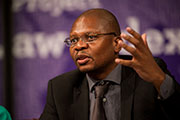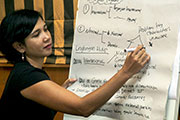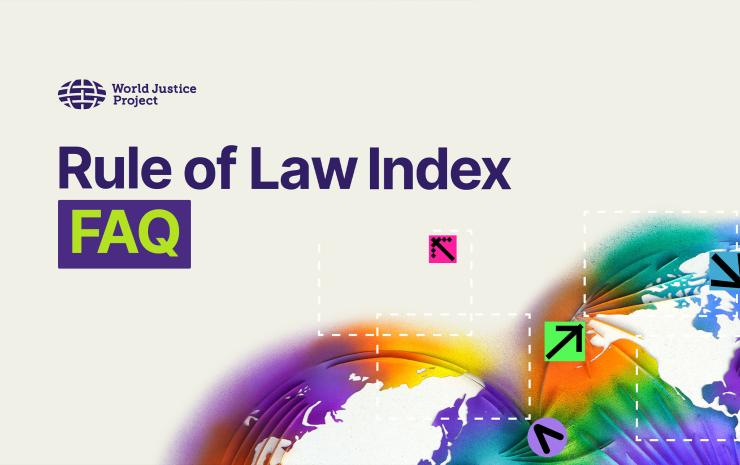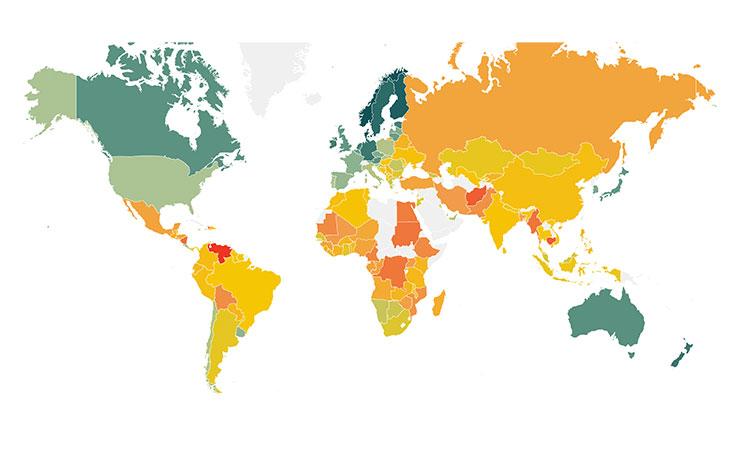

WJP Executive Director Elizabeth Andersen recently addressed the American Bar Association’s “Putting People first: People-Centered Justice at Home and Abroad” conference in Washington DC. Andersen used her remarks to define the unmet justice needs experienced by billions around the world and explain how people-centered justice can bridge the justice gap.
Read her remarks below.
Thank you for the opportunity to help kick off this important and much-needed conference about transforming our justice systems to better serve the people they are intended to benefit.
Let me begin my remarks with a story. It is the story of Louisa. She is an immigrant to the United States with temporary protected status. She has work authorization, but a glitch in the USCIS computer system meant that she did not receive an electronic certification of the extension of her work authorization. She works as a housekeeper, and her employer, who would rather not report her employment and pay the required taxes anyway, told her not to worry when she said she did not have the certification; he would pay her in cash under the table. Walking home from the metro on payday, her purse was snatched, and she lost 2 weeks’ worth of those cash wages. When she was subsequently unable to pay monthly rent, her landlord evicted her from her apartment, notwithstanding a moratorium on evictions due to the pandemic. There were notices about the moratorium posted in the subway, but most of the signs were only in English, and with limited English language skills, Louisa probably didn’t absorb the information about the moratorium or available legal services for those facing eviction. Besides, she can’t afford to miss work and visit legal aid or contest the eviction in court.
Louisa’s story is fictionalized, but it is based on real circumstances and draws on data from real cases, showing how people experience justice problems. It is illustrative of millions—even billions—of people’s experience of justice problems the world over. According to a 2019 World Justice Project study aimed at measuring the justice gap, globally, 2.1 billion people are employed in the informal economy; 1.1 billion are victims of non-violent crime such as burglary or theft annually; 2.3 billion lack proof of secure housing or land tenure rights; and 1.4 billion have unmet civil or administrative justice needs. Many of these circumstances are overlapping and compounded disproportionately in poor and otherwise marginalized populations.
We are here today to explore a reorientation of our justice policy making, in order to take as a point of departure the experience of people like Louisa. For far too long and in too many jurisdictions, we have approached justice system strengthening from the perspective of institutions. We have asked what do judges, lawyers, prosecutors, and bar associations need to do their jobs better, without fully understanding the needs of the people those institutions and actors are meant to serve.
By contrast, people-centered justice flips that approach on its head. It begins with a mapping of people’s justice needs, the ways in which they solve their justice problems, and the obstacles they face in doing so. Armed with this understanding of what has been referred to as people’s “justice journeys,” we can design justice institutions and policy interventions to meet people’s needs more effectively.
What difference does this shift in perspective make in our justice policy? A big difference. The World Justice Project has undertaken legal needs surveys in 101 countries, gathering information about legal needs from over 100,000 households—the largest data set of its kind available. This exercise to map people’s justice journeys in each of these jurisdictions was eye-opening.
We found that:
Justice problems are ubiquitous and frequent. Globally, approximately half (49%) of people surveyed experienced at least one legal problem in the last two years. (In the United States, the prevalence was even higher—at 66%).
Most people do not turn to lawyers and courts. Less than a third (29%) of people who experience a legal problem sought any form of advice to help them better understand or resolve their problem. Those who did seek assistance preferred to turn to a friend or family member; just 17% took their problem to an authority or third party to mediate or adjudicate their problem.
People face a variety of obstacles to meeting their justice needs, beginning with their ability to recognize their problems as having a legal remedy. Indeed, fewer than 1 in 3 people (29%) understood their problem to be legal in nature as opposed to “bad luck” or a community matter. Most people do not know that the law, lawyers, and justice systems afford them rights and remedies. In other cases, people knew they had a legal problem but faced various barriers to accessing assistance. One in six reported that it was difficult or nearly impossible to find the money required to resolve their problem.
Justice policy that takes on board this data about people’s justice journeys looks very different. Rather than reinforcing institutions to which people do not turn, a people-centered justice policy focuses on understanding people’s justice needs and transforming justice institutions and other services to meet those needs. Let me mention just 4 ways in which a people-centered approach looks different.
A people-centered approach to justice will emphasize:
A strengthened data ecosystem to capture through legal needs surveys and administrative data a clear picture of people’s justice needs and experiences. Imagine a health care system where we did not know the prevalence of illnesses we were trying to prevent or treat. That’s where we are with respect to data about justice needs in most jurisdictions.
A people-centered approach will employ:
Preventive strategies to address the root causes of prevalent justice problems. Again, imagine a public health system where we poured resources into hospitals but not vaccination programs.
A people-centered approach will emphasize:
Information and education about legal rights and remedies, so people can come to understand the justice services available to them; and
A people-centered approach will focus on:
Removing barriers to assistance, including issues such as language, the physical location and cost of services, as well as excessive regulatory restrictions on the provision of basic legal services. It will take advantage of cross-sectoral collaboration—collaboration between the justice system and the health, education, and other social services systems--to meet people where they are with the justice services they need.
Taking a people-centered approach to justice requires a major change in the way we do justice system strengthening here at home in the United States and around the world. The good news is that—as evidenced by this conference—that shift is well under way. USAID has put people-centered justice at the heart of its new Rule of Law Policy, while the Department of Justice is stimulating important reform and innovation here at home through its Access to Justice office and with the committed leadership of its direction, Rachel Rossi, as well as the Attorney General. Nineteen governments—including the United States—and a couple dozen civil society and international organizations have formed the Justice Action Coalition to drive this agenda forward.
The American Bar Association—serving as the national voice of the legal profession and undertaking rule of law development assistance across the globe—is uniquely positioned to drive forward this paradigm shift in justice sector policy making. I commend you for convening us for this important discussion about just how we go about a pivot to people-centered justice.
Sign up for our email newsletter to stay in touch with us and get updates on rule of law news, data, and events.






